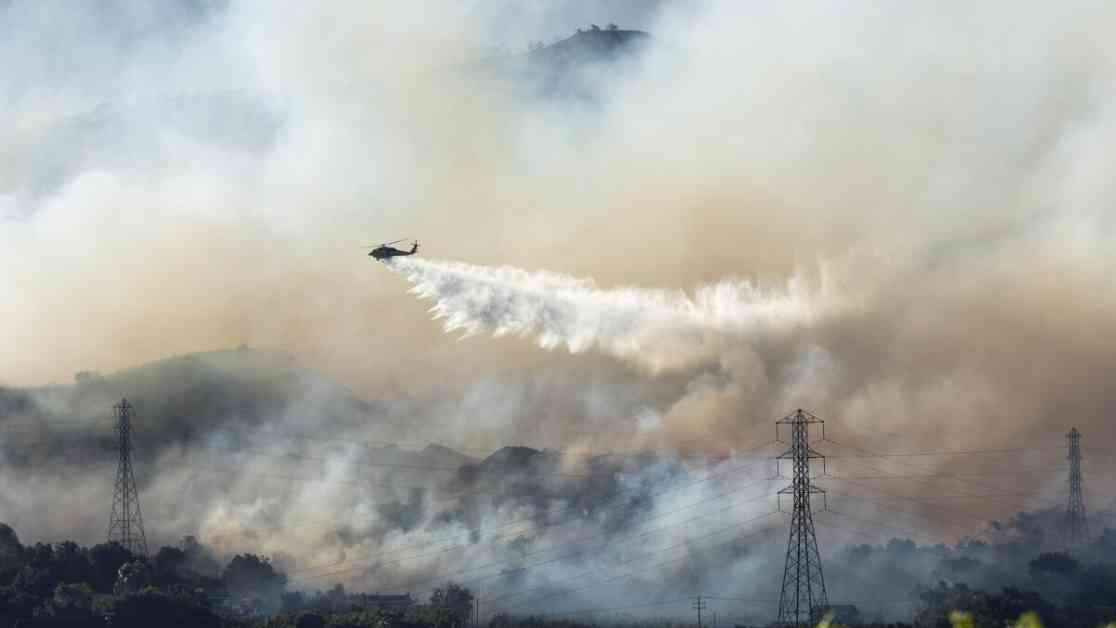After a series of devastating wildfires in Southern California, Assemblymember Steve Bennett took action to prevent future water supply issues during emergencies. In the aftermath of the Thomas and Mountain fires, which left communities without adequate water access, Bennett introduced legislation to ensure that water systems in high-risk fire areas have backup power and full water tanks. The bill, AB 367, aims to set new standards for water providers in Ventura County, with plans to expand statewide. While the measure won’t solve all of California’s wildfire challenges, it represents a crucial step towards minimizing losses in the future.
Addressing Water Supply Challenges
During the Mountain fire in Camarillo, firefighters faced water pump failures and power losses that hindered their ability to combat the blaze effectively. The destruction of over 100 structures emphasized the urgent need for improved water infrastructure in fire-prone regions. Bennett’s proposed legislation seeks to mandate backup power for water pumps, regular tank capacity checks, and adherence to fire safety standards for water districts serving high-risk areas. These requirements aim to enhance the resilience of water systems during emergencies, reducing the likelihood of dry hydrants and low water pressure in critical situations.
Assemblymember Jacqui Irwin, a co-author of the bill, emphasized the importance of learning from past fires to enhance preparedness for future crises. While the legislation cannot guarantee a seamless response to major wildfires, it provides a framework for water providers to improve their systems and minimize disruptions during emergencies. By requiring annual reviews and post-fire assessments, the bill aims to foster a culture of continuous improvement and readiness among water districts serving vulnerable communities.
Challenges and Considerations
Despite the potential benefits of the proposed legislation, concerns about funding and implementation loom large. The cost of installing backup generators and upgrading water infrastructure could be substantial, leading to possible rate hikes for residents. Ian Prichard, deputy general manager for Calleguas Municipal Water District, highlighted the financial burden that smaller water providers may face in complying with the new requirements. While the bill addresses critical issues related to water supply during wildfires, it represents just one piece of the complex puzzle of California’s aging water infrastructure.
Experts like Max Gomberg and Gregory Pierce underscore the importance of balancing fire risk reduction with affordability for consumers. Gomberg noted that while the bill offers a solid starting point for enhancing water systems in fire-prone areas, more guidance on funding and best practices may be necessary to support implementation across different water districts. Pierce echoed these sentiments, emphasizing the need for comprehensive strategies to address the multifaceted challenges posed by escalating wildfires and strained water resources.
In conclusion, Assemblymember Steve Bennett’s proposed legislation represents a proactive response to the water supply vulnerabilities exposed by recent wildfires in California. By setting new standards for water providers in high-risk fire zones, the bill aims to strengthen the resilience of water systems and improve emergency response capabilities. While challenges related to funding and implementation remain, the proposed measures offer a critical starting point for enhancing water infrastructure in the face of evolving wildfire threats. As California grapples with the increasing impact of wildfires on communities and ecosystems, proactive measures like AB 367 can play a vital role in mitigating risks and safeguarding water access during emergencies.


